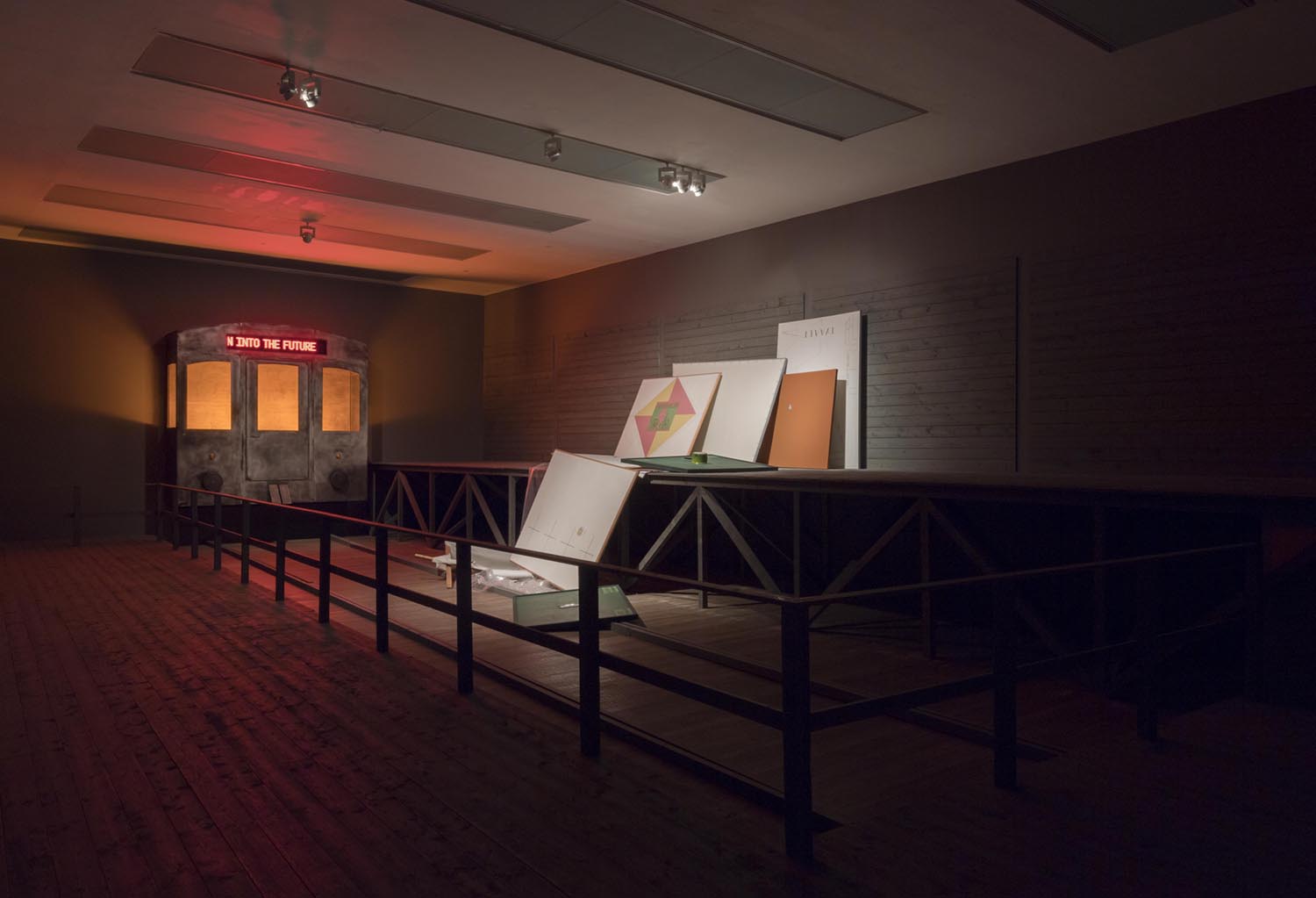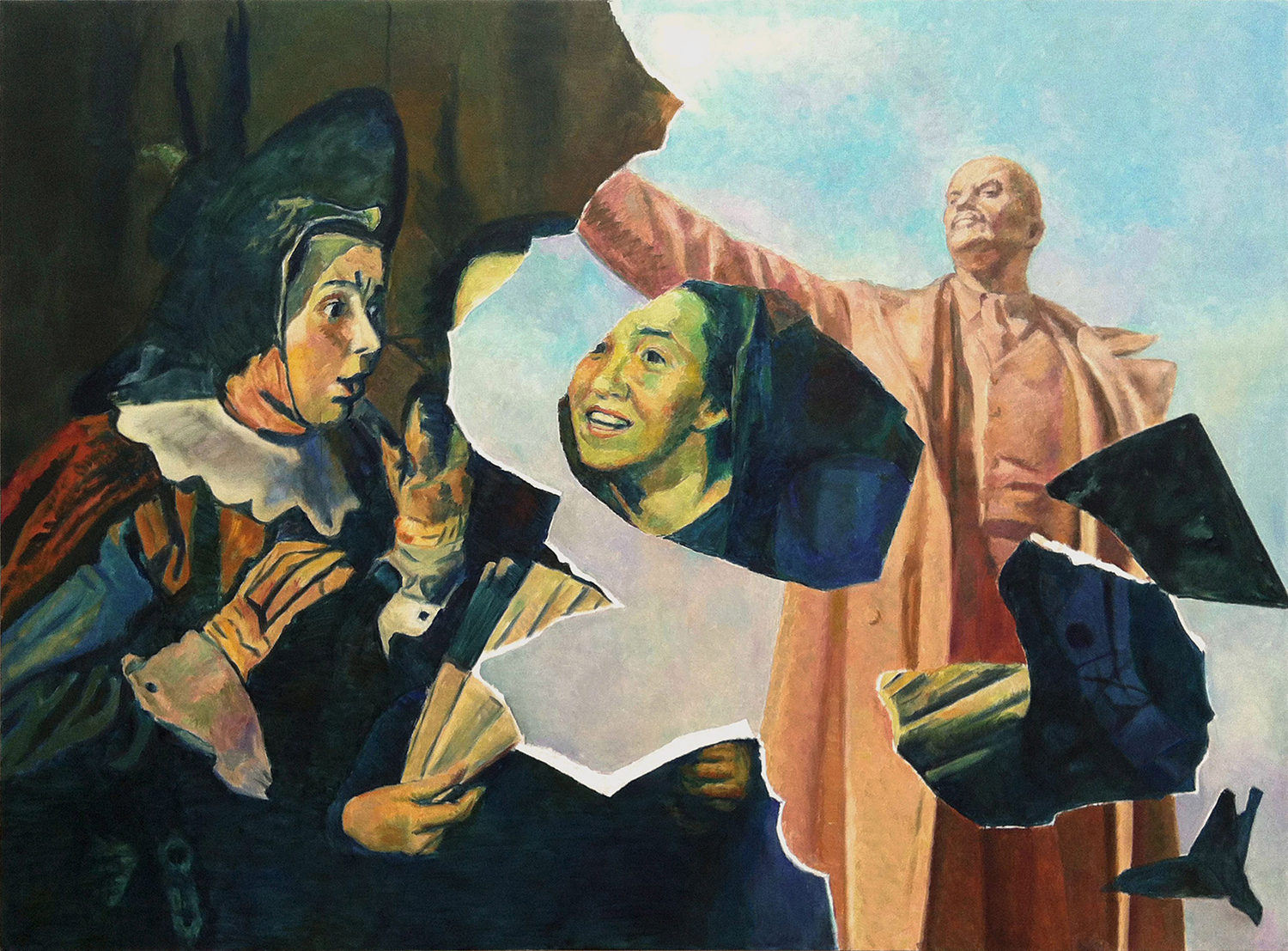Shows
Ilya and Emilia Kabakov’s “Not Everyone Will Be Taken into the Future”


Since 2017 marked the centenary of the Russian Revolution, it was a fitting year to mount the first major British exhibition of Russian-born artist couple Ilya and Emilia Kabakov. The Kabakovs are pioneers of Russian conceptual art who bring humor and pathos to their explorations of the Soviet experience and the long shadow it has cast, while posing questions about history, permanence, and perspective that carry universal resonance.

The Kabakovs’ work is suffused with Soviet imagery, from pastiches of socialist realist painting to the painstakingly recreated communal apartments in their installations. In The Man Who Flew into Space from His Apartment (1985), the viewer is invited to peer into a tiny room fanatically wallpapered from floor to ceiling with Soviet posters. A makeshift contraption that has propelled the former occupant into space sits in the center of the room. The absurd lengths to which this unnamed figure has gone to escape his drab apartment is a humorous take on the deprivations of Soviet life and a sly dig at the Soviet Union’s ambitions in the space race; this levity is only undercut by the obvious but unspoken disappointment of unfulfilled promises.
The theme of frustrated hopes and their attendant anxieties takes a darker turn in Not Everyone Will Be Taken into the Future (2001), in which a train—an iconic symbol of progress—appears to be pulling out of the platform. The title of the installation flashes ominously across the destination display on the rear of the train, a reminder that only a select few will enjoy recognition in the future. The discarded canvases in the train’s wake represent the many artists who will be consigned to the dustbin of history, whether by state-sanctioned omission or the vagaries of fashion. While the Kabakovs are primarily concerned with art history in this installation, it doesn’t take a huge leap to realize how aptly its title could describe the division between “winners” and “losers” in both the Soviet and contemporary capitalist systems.

The Kabakovs’ interest in permanence and the role of history is also apparent in their more recent work, such as their “Under the Snow” series (2004–06), in which Soviet-style scenes are painted over with swathes of white, suggestive of a post-collapse tabula rasa. A few years later, the artists took this practice further: The Appearance of the Collage #10 (2012), a painting in the style of a Dutch Old Master, fragments to reveal a socialist realist depiction of a towering figure of Lenin. These paintings expose the layered and pliable nature of memory, which is subject to shifting frames of reference and liable to be overwritten.
Identity in the Kabakovs’ work is similarly amorphous, with pseudonyms and fictional characters both present as recurring motifs; Ilya Kabakov himself was forced to work incognito after falling out of favor with Soviet authorities in the 1970s. “10 Characters,” which was originally created in the early years of that decade, cleverly references various banned art movements in ten albums, each detailing the struggles of a character, while the “Holiday” series (1987) has a backstory involving an alter ego—a socialist realist painter who decorates his paintings with rows of colorful candy wrappers after the commission by the state falls through. The use of this packaging mirrors the saccharine depictions of idealized socialist existence underneath, excoriating the spuriousness of the official narrative; after all, candy wrappers are really just trash.

Ilya Kabakov’s focus on ordinary, downtrodden figures calls to mind the powerless outsiders of Gogol and Dostoevsky. Yet the artificial and incomplete histories of his characters raises the question: Is their inclusion an homage to the many people left by the wayside in the Soviet regime’s relentless march of progress, or is the falsity of these made-up characters a comment on the enforced anonymity of the Soviet subject, hidden beneath a mask of contented obeisance? The idea of invisibility is tackled directly in the installation Three Nights (1989), featuring “little white men,” miniscule paper cutouts of faceless, identical figures who, according to the accompanying texts, reside in a parallel world and can only be seen through the monoscope provided.
One of the few directly personal works is Labyrinth (My Mother’s Album) (1990), in which pages from the autobiography of Ilya Kabakov’s mother line corridors recreated in the style of Soviet communal apartments. As you walk along the corridor, reading the first-person accounts of the many hardships that she faced, you hear a recording of the artist singing romantic songs from his youth. Straddling the line between horror and nostalgia, Kabakov confronts the conflicting impulses that distort our engagement with history.
This extensive exhibition showcases the Kabakovs’ ability to capture the many paradoxes of Soviet life, navigating the space between hope and despair, ideals and reality. But it is their incisive examination of the connections between the visible and the obscure, and the innate instability of images imperfectly conceived and perceived, that allows them to transcend the boundaries of their contextual specificities. At a time when truth and reality appear increasingly plastic, the explorations of history, memory and perception presented in this thought-provoking show were imbued with a renewed sense of urgency.

Ilya and Emilia Kabakov’s “Not Everyone Will Be Taken into the Future” was on view at Tate Modern, London, until January 28, 2018.







